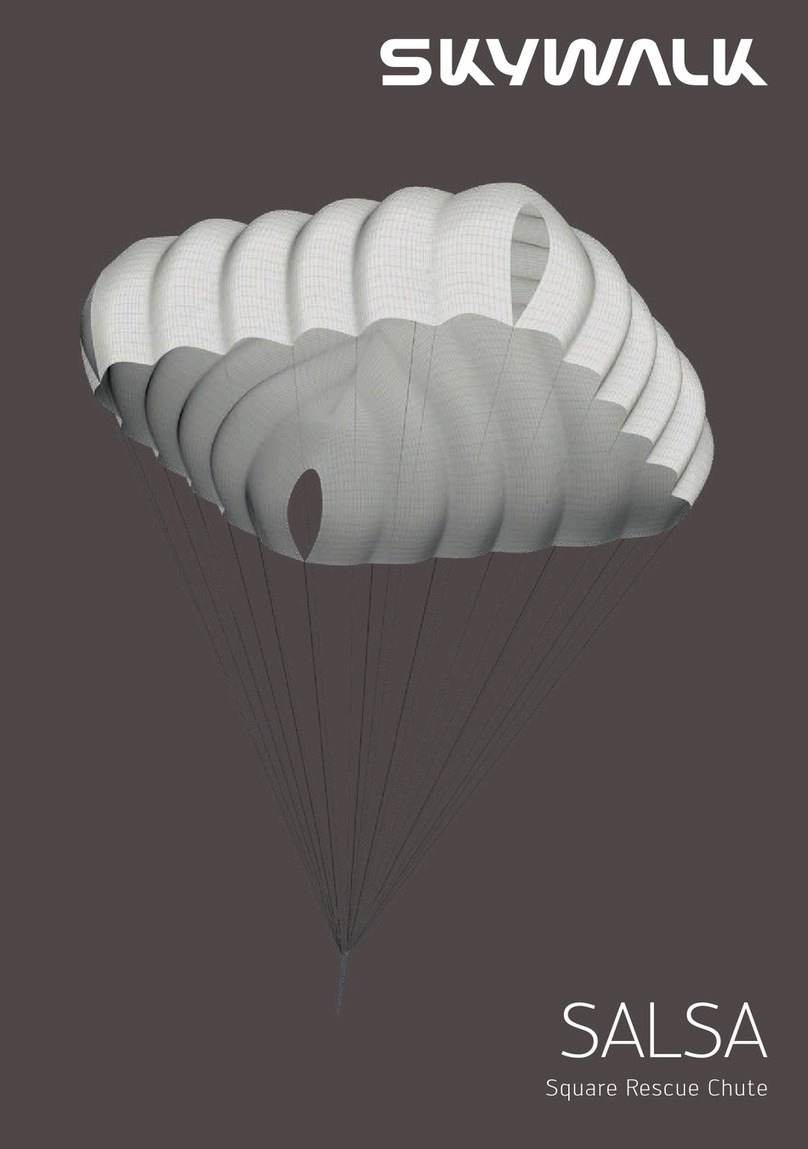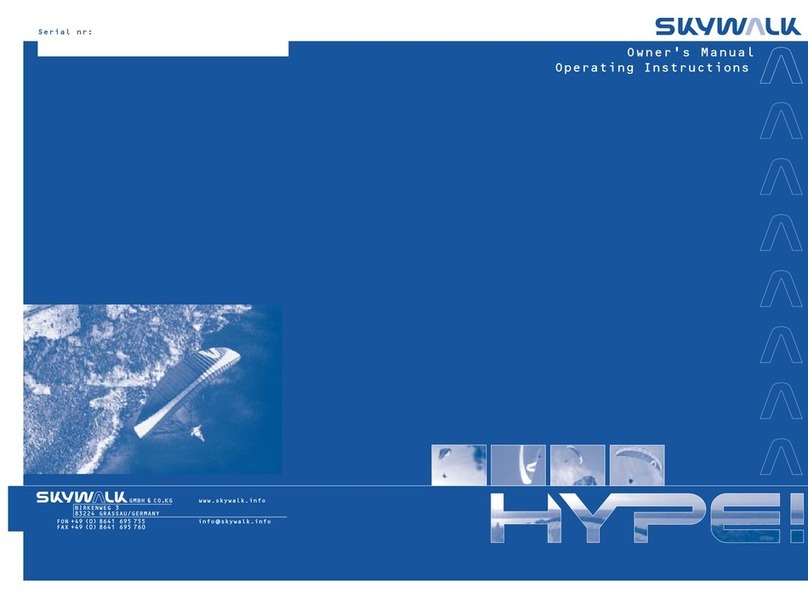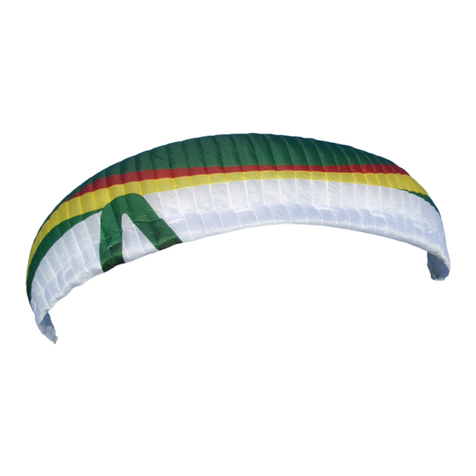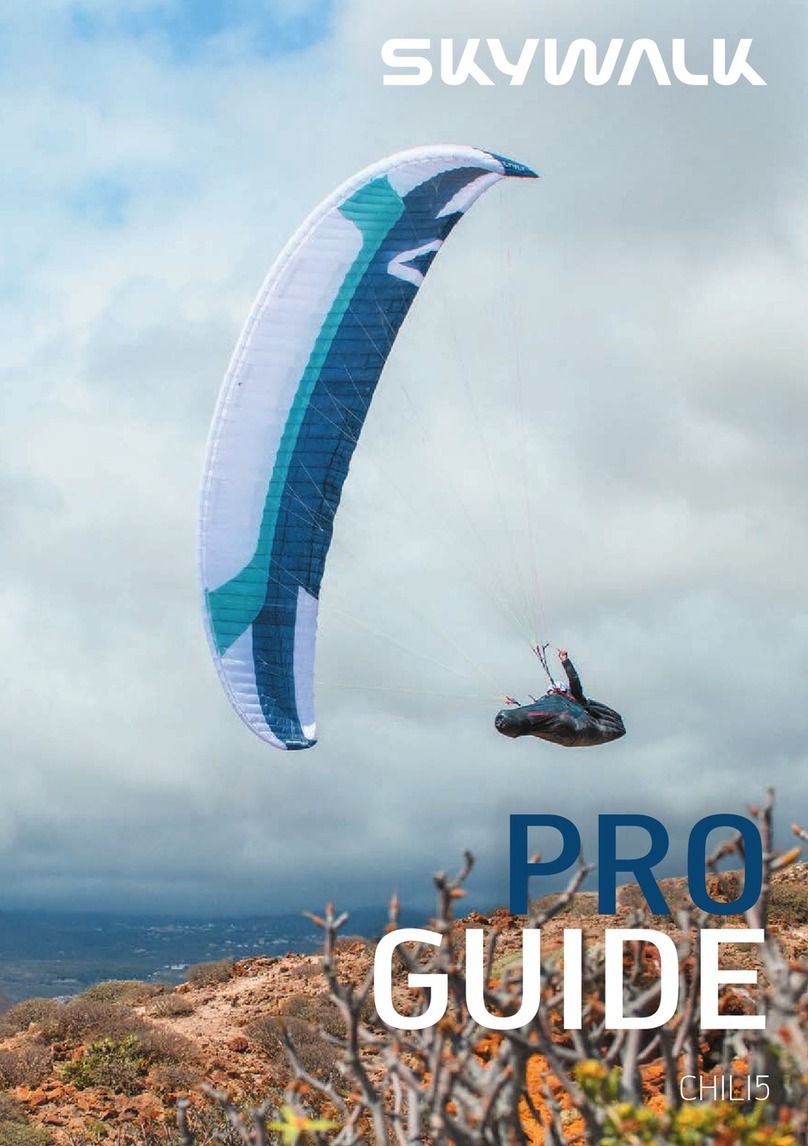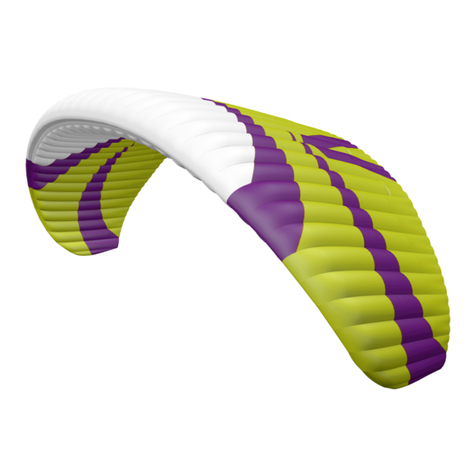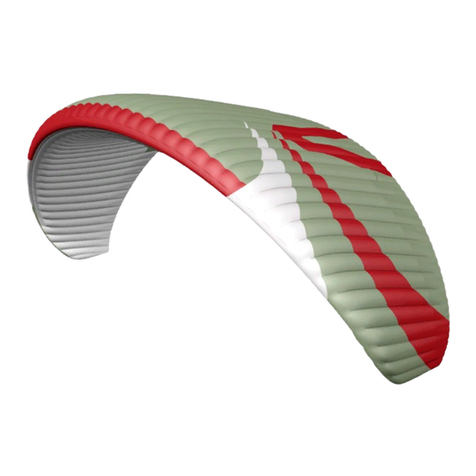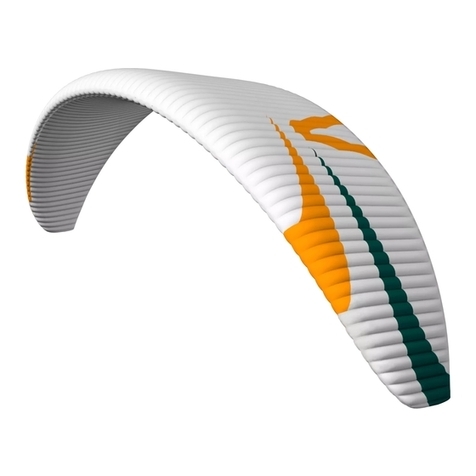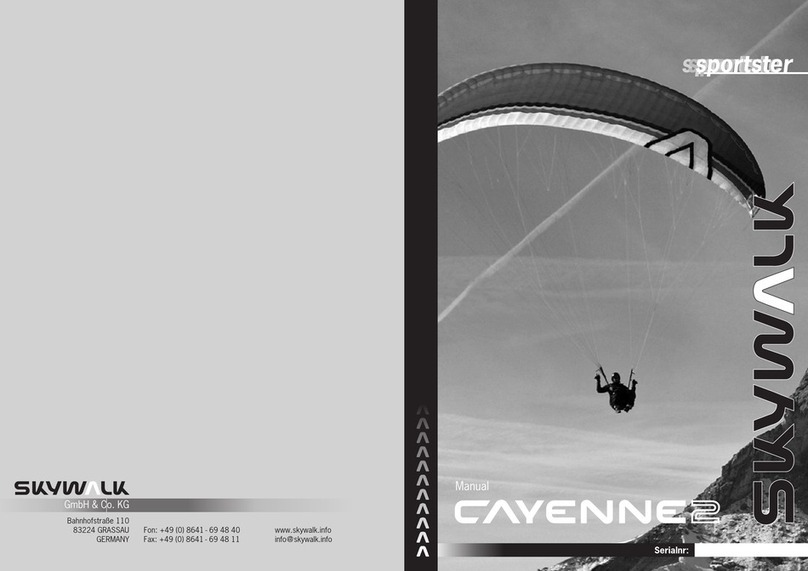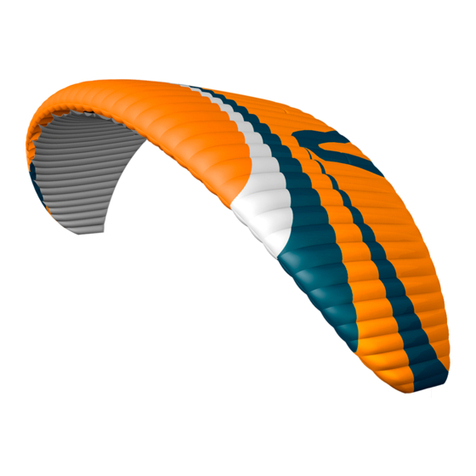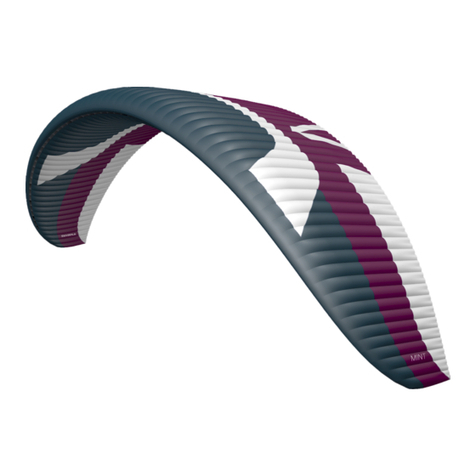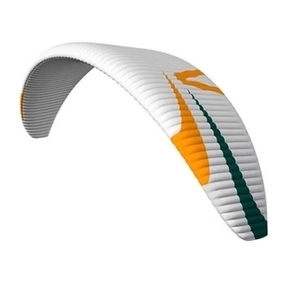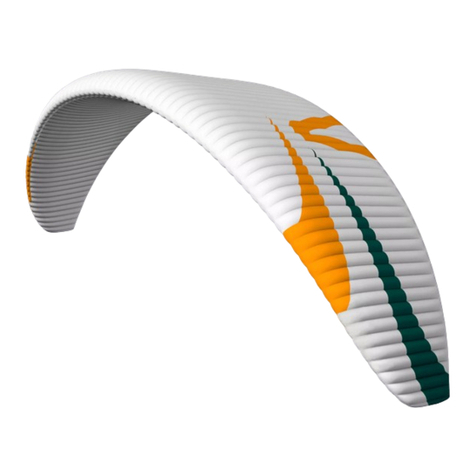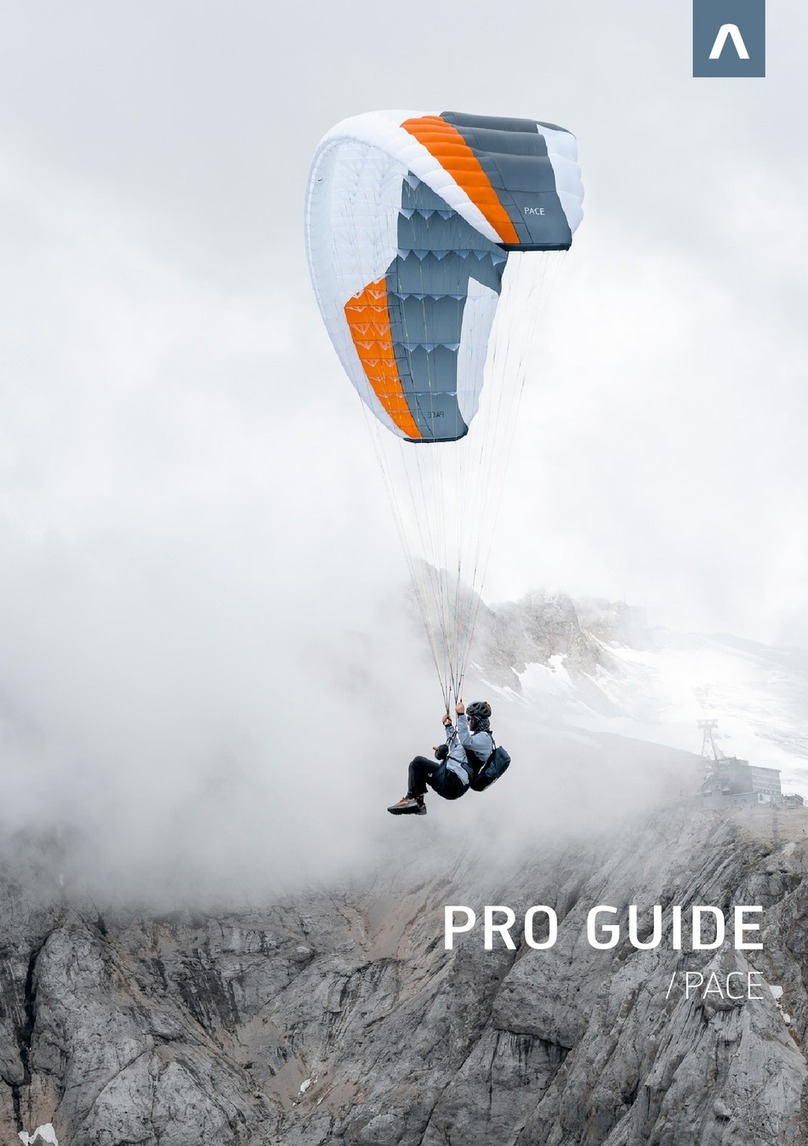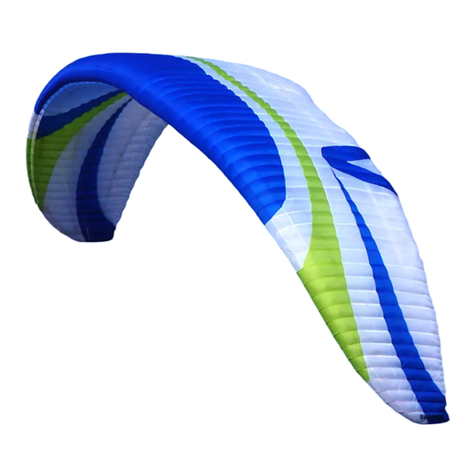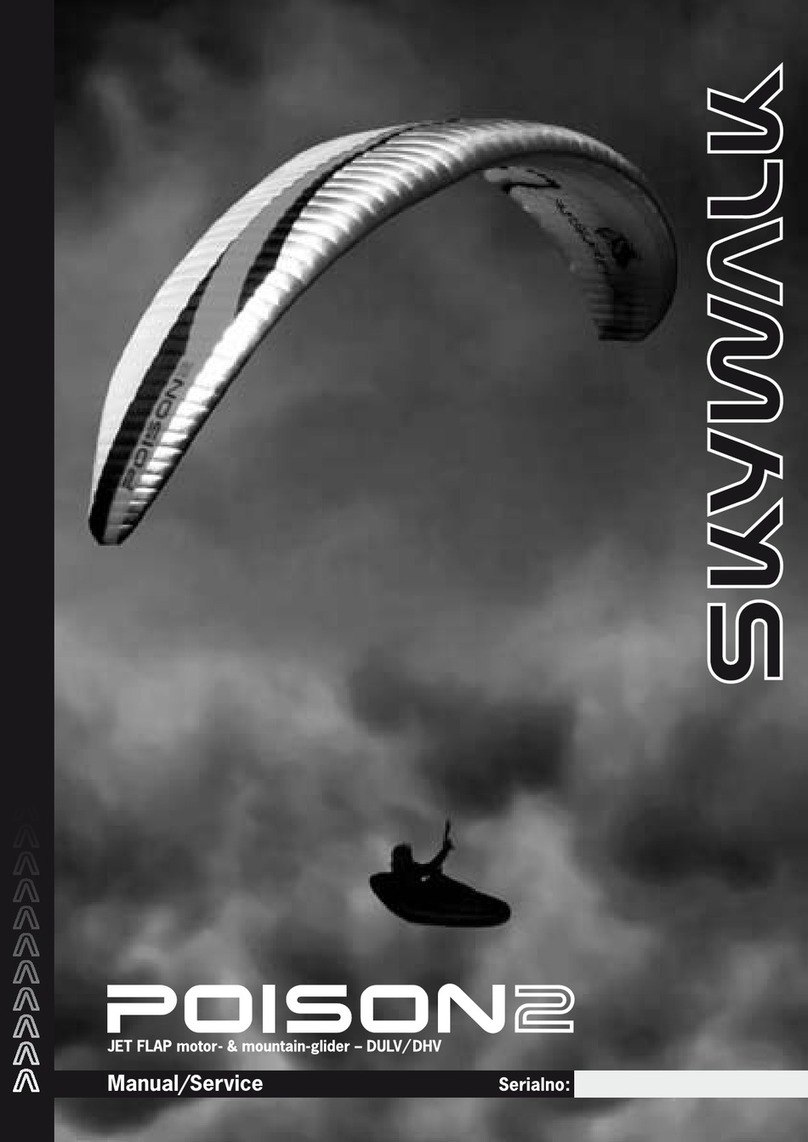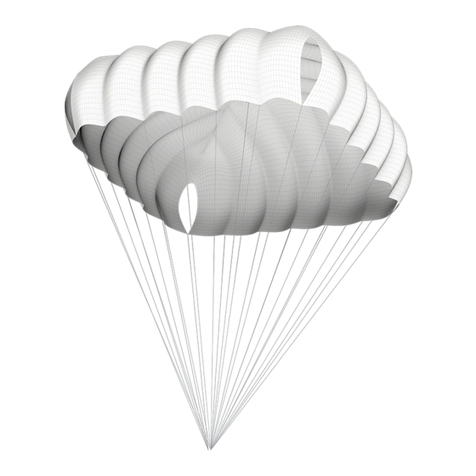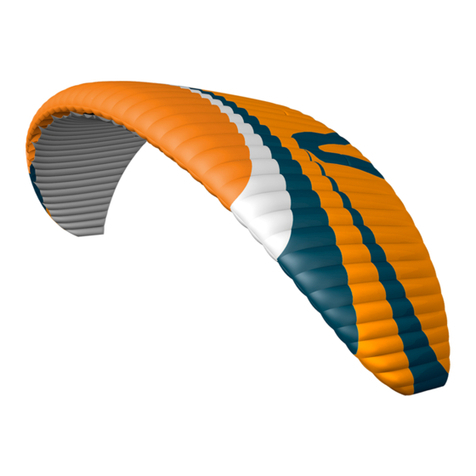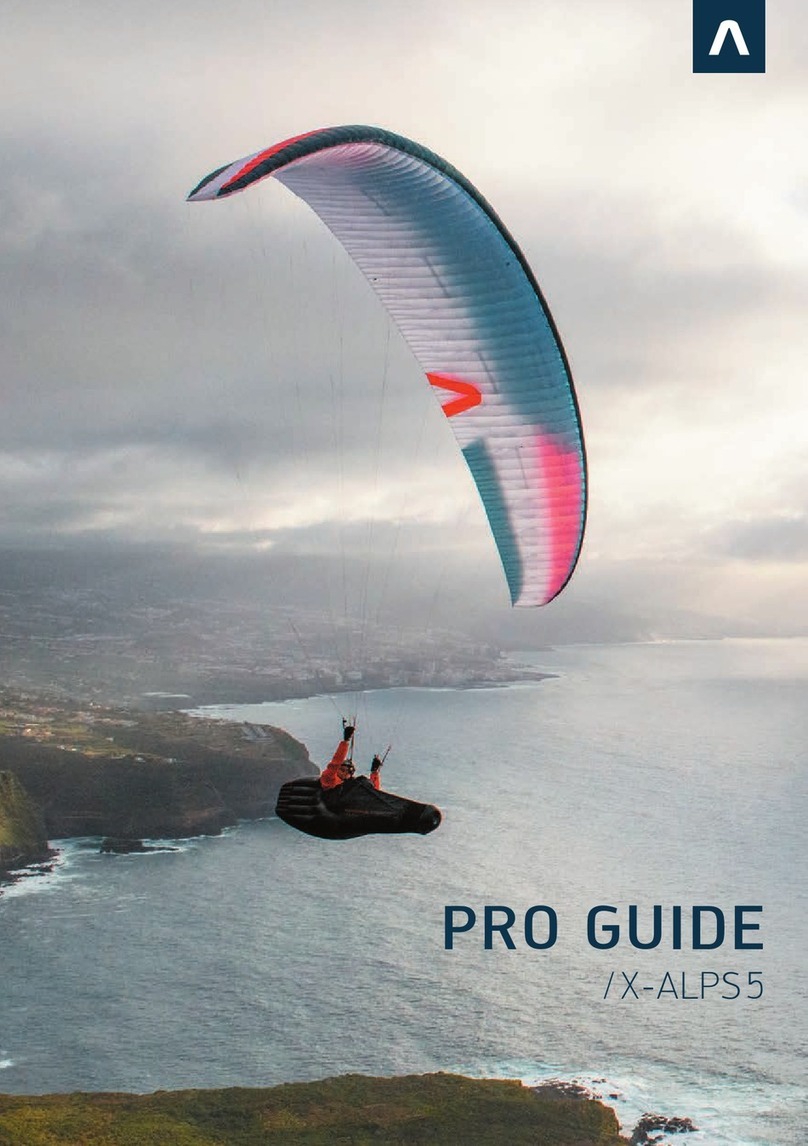
PRO GUIDE // SPIRIT
This setting should not be lengthened, for example, to provide more brake travel in extreme
flight situations or during landing, nor shortened such that the glider is flown constantly
with some brake on.
To provide a better overview and to make sorting easier, the lines
have different colors:
> the AI, AII, AIII-main lines and the A-risers are red.
> the BI, BII, BIII-main lines are yellow.
> the CI, CII, CIII-main lines are blue.
> the main stabilo lines are orange.
> the main brake lines are orange.
The lines are attached with loops to oval shackles and secured with rubber rings.
The skywalk SPIRIT has 3 risers per side:
> the A-lines lead to the A-riser
> the B-lines as well as the stabilo lines lead to the B-riser
> the C-lines lead to the C-riser
A schematic drawing of the risers can be found at the back of the manual.
5 ACCELERATION SYSTEM
The skywalk SPIRIT can be equipped with a foot-operated acceleration system.
The acceleration system affects the A- and B-risers. Exact lengths of the accelerat-
ed risers can be found at the end of the instruction.
6 FLIGHT TECHNIQUES AND CHARACTERISTICS
WINCHTOWING
The skywalk SPIRIT is well suited for winch towing. Make sure that you only use certified
winches and that you climb from the ground at a flat angle.
The pilot must have had proper towing instruction and must ensure that the winch
operator has had proper training that includes paragliders. When launching on a winch,
always fly with a lot of feeling and don’t brake too much as your glider will already have
an increased angle of attack. We recommend the use of a towing adapter.
FLYING WITH A MOTOR
Currently, the SPIRIT has no certification for flying with a motor.
You can find out the current status of motor certification at any dealer or importer, or by
asking skywalk directly.
FULL STALL
To initiate a full stall, both brake lines must be pulled down symmetrically on both sides.
he glider will slow down steadily until the airflow over the top of the wing is interrupted.
he wing then suddenly will tilt backwards. Despite this unpleasant glider reaction, both brake
lines must be held down firmly until the glider has stabilized. The skywalk SPIRIT flies back-
wards in the full stall and usually forms a slight rosette at the front. To recover, guide both
brake lines symmetrically upwards (time> = 1 sec). The glider will open and surge forward to
pick up speed. Symmetrical braking prevents excessive forward surging of the wing.
If the pilot does not apply the brakes, the skywalk SPIRIT will surge forward, possibly leading
to a frontal collapse.
DUE TO THE HIGH SURFACE LOADING, WE DO NOT RECOMMEND FLYING
FULL STALL, SPIN OR PARACHUTAL STALL MANEUVERS WITH A SPIRIT,
AS THESE CAN LEAD TO CHALLENGING GLIDER REACTIONS.
IN NO EVENT SHOULD THE BRAKES BE RELEASED WHILE THE STALLED
GLIDER IS STILL BEHIND THE PILOT. IF RECOVERY IS INITIATED TOO
EARLY, TOO FAST OR INCORRECTLY, THIS MAY, IN THE WORST CASE,
AUSE THE GLIDER TO SURGE FORWARD DANGEROUSLY.
You can find further information on practices and characteristics of flying in the en-
closed “BASIC GUIDE“.
6 Acceleration System Flight Techniques and Characteristics 7
